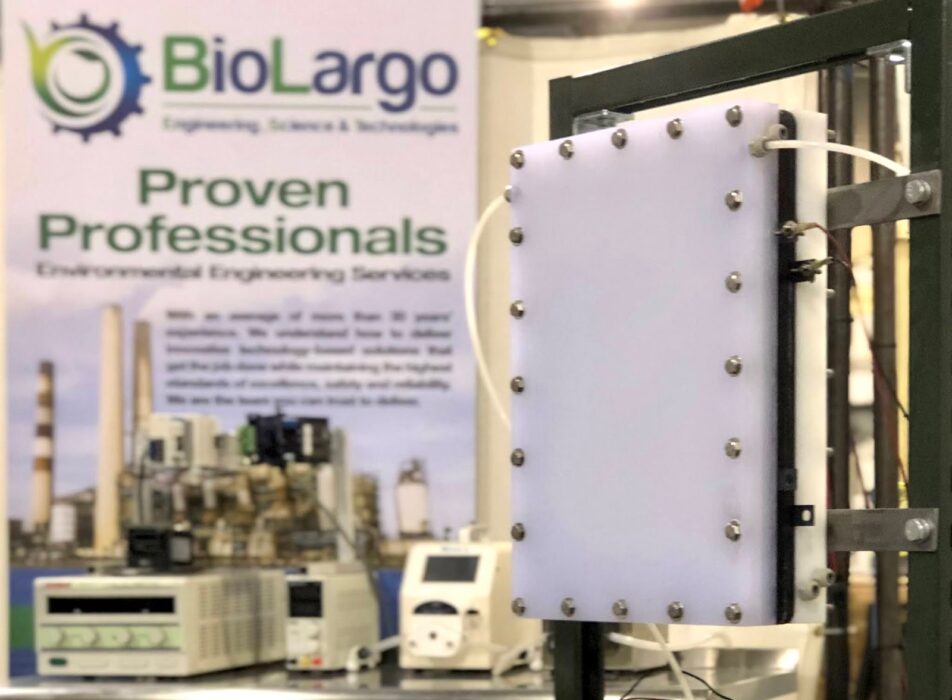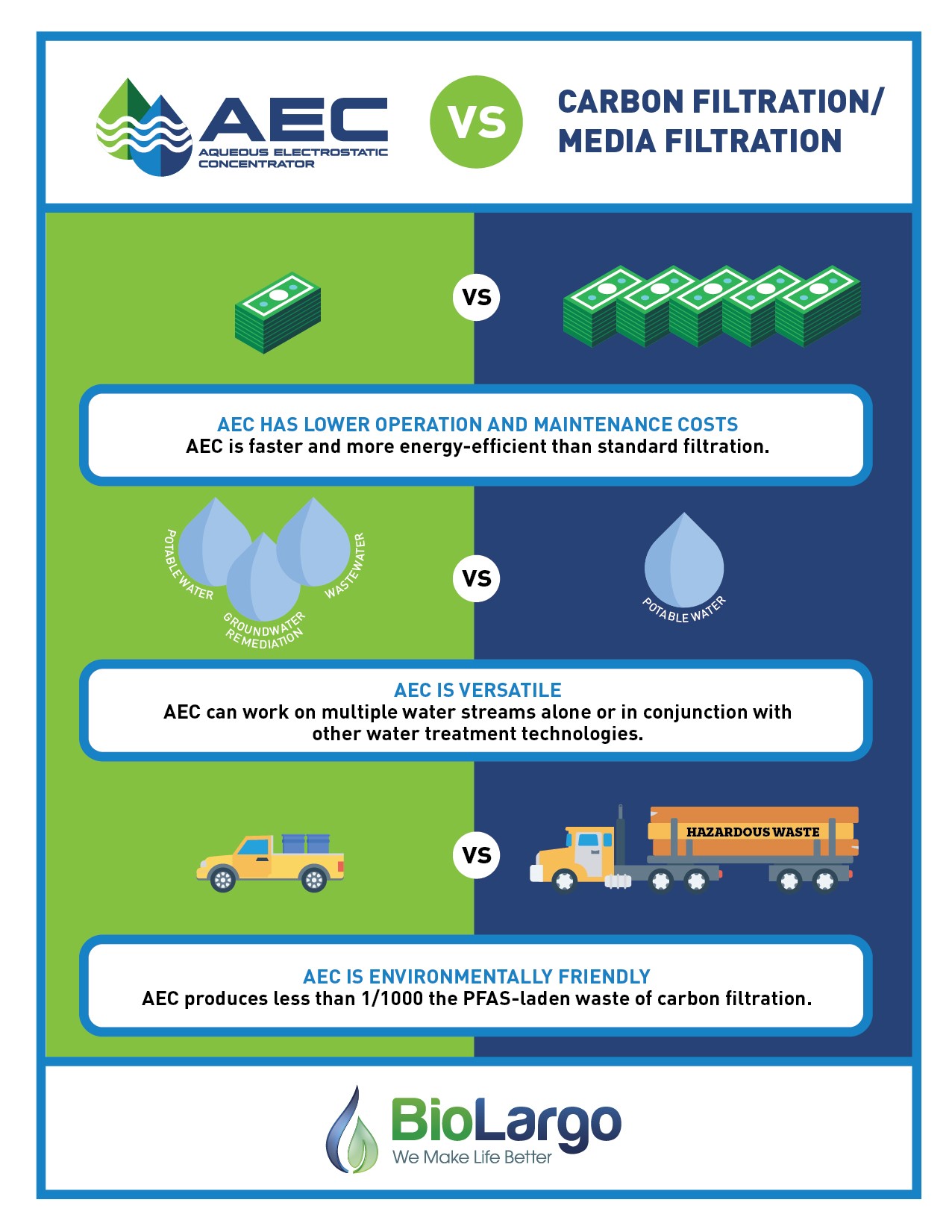BioLargo Aqueous Electrostatic Concentrator (AEC) is designed to provide rapid, effective, and affordable concentration of per- and polyfluoroalkyl substances (PFAS) in water. It works by separating PFAS compounds in an electrostatic field and forcing them through a proprietary membrane system.
The result – the AEC removes >99% PFAS from water in continuous flow, at energy costs as low as 30 cents per 1,000 gallons.
Advantages over other technologies:
-
-
-
More energy-efficient
-
More affordable on per-gallon basis
-
Much less PFAS-laden waste produced
-
Less activated carbon required in PFAS life cycle
-
Higher purity of final water
-
Compact; small footprint
-
-
Development and commercialization of the AEC is supported in part by a grant provided by the US EPA SBIR.


What are PFAS?
PFAS are a group of man-made chemicals found in countless household items like electronics, cleaning supplies, non-stick cookware and more. While many of these items are not known to be dangerous by virtue of containing PFAS, their ubiquitous manufacturing throughout the latter half of the 20th century led to widespread contamination of lakes, rivers, wells and groundwater throughout the U.S. In recent decades, there has been mounting evidence of the damage to human health caused by these chemicals, including cancer and hormone disorders.
In some areas such as Southern California, municipalities are already actively installing PFAS treatment systems, and as federal regulations go into effect, the adoption of PFAS treatment systems is expected to expand dramatically across the country. Drinking water utilities have struggled to find economical treatment technologies that can efficiently remove PFAS from water without stretching their budgets and generating mountains of toxic waste as a by-product of treatment. In Orange County, 11 water districts have launched a lawsuit against major PFAS polluters, including DuPont and 3M, to seek compensation for mandated well closures and water treatment system retrofitting needed to remove PFAS from their drinking water supplies.
At present, carbon filtration is the most common PFAS removal technology, but it comes with a serious downside – it generates huge volumes of PFAS-laden carbon waste that requires disposal. Usually, municipalities have to foot the bill for the costly transport and disposal of that PFAS-laden waste, which is normally done by incineration. Not only is PFAS carbon incineration costly, but a growing body of evidence suggests that it generates toxic volatile air contaminants (in addition to greenhouse gases) as a result of incomplete combustion of the PFAS chemicals. Disposal of PFAS-laden waste therefore remains a contentious issue (one that regulators are starting to look at) and municipalities would be wise to consider technologies that produce less PFAS-laden waste.
Our company has invented and is pilot-testing an innovative technology that removes PFAS chemicals from water faster and more cheaply than carbon filtration. Our technology, called the BioLargo AEC, uses electrolysis to extract PFAS molecules from water and deposit them onto proprietary membranes while using little electricity and no input chemistry. Proven to be more than 99.9% effective in removing PFAS from contaminated water, it produces only a fraction of the PFAS-laden waste that carbon filtration treatment creates, resulting in substantially lower waste disposal costs and better environmental outcomes.
Contact us for a free consultation to determine if the BioLargo AEC is right for your needs.
Call us at 1 (888) 400-2863
Or email us at randall.moore@biolargo.com
